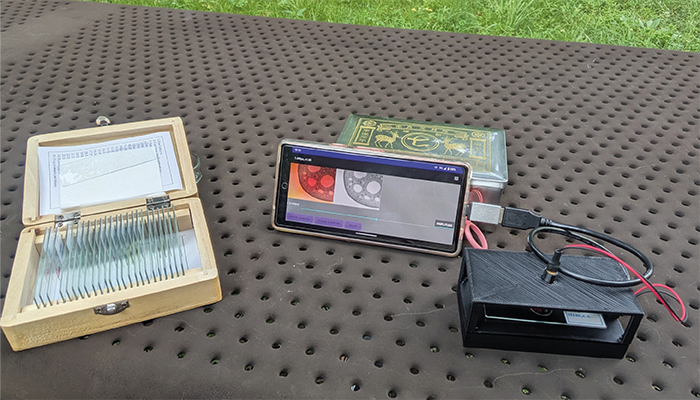
A new smartphone-based digital holographic microscope (DHM) allows users to make precise 3D measurements with a broad range of applications (1). Here, lead researcher Yuki Nagahama shares more about this exciting development.
How does your smartphone-based DHM device differ from traditional systems?
In this DHM system, laser light illuminates the object, creating interference fringes by combining light that passes through the object with light that does not. These fringes, called holograms, are recorded. A computational system then simulates light propagation on the hologram, allowing the object to be focused and observed later.
Unlike traditional microscopes, DHMs capture both the amplitude and phase information of light. This enables the observation of transparent objects, such as microorganisms and cells, without the need for staining.
How could this device enhance point-of-care (POC) testing, particularly in remote or resource-limited settings?
We estimate this device will cost only tens of dollars in materials. With smartphones becoming more widespread, offering a microscope at this low price makes it far more affordable than typical options. This affordability could allow for the development of POC testing environments in a variety of locations.

What diagnostic advantages does this system offer for clinical pathology?
The phase information can be used to estimate the object's thickness, aiding in the identification of microscopic features.
Unlike typical microscopes, this DHM system doesn't use physical lenses, like eyepieces or objectives, to magnify images. Instead, it uses a touchscreen zoom function powered by optical simulation. This allows users to zoom in without changing lenses, enhancing convenience and usability.
How could the device be improved to broaden its applications in bio-imaging or enhance its value in clinical diagnostics?
We are exploring ways to enhance image quality with deep learning. DHMs often produce unwanted effects, like conjugated images, that overlap with the observed image. Our research focuses on using deep learning to remove these unwanted elements through image conversion.

More broadly, how do you anticipate POC technologies will evolve over the next decade?
With the growing demand for telemedicine, patients may increasingly perform tests at home or in remote areas and share results with medical professionals for diagnosis. Linking these devices with wearables and smart devices will also allow patients to monitor and manage their health. To enable this, a secure system for managing POC data and a robust communication infrastructure are essential. Additionally, providing support to help patients use POC devices effectively will be crucial.
References
- Y Nagahama, Optica, 63, 25 (2024). DOI: 10.1364/AO.532972.




